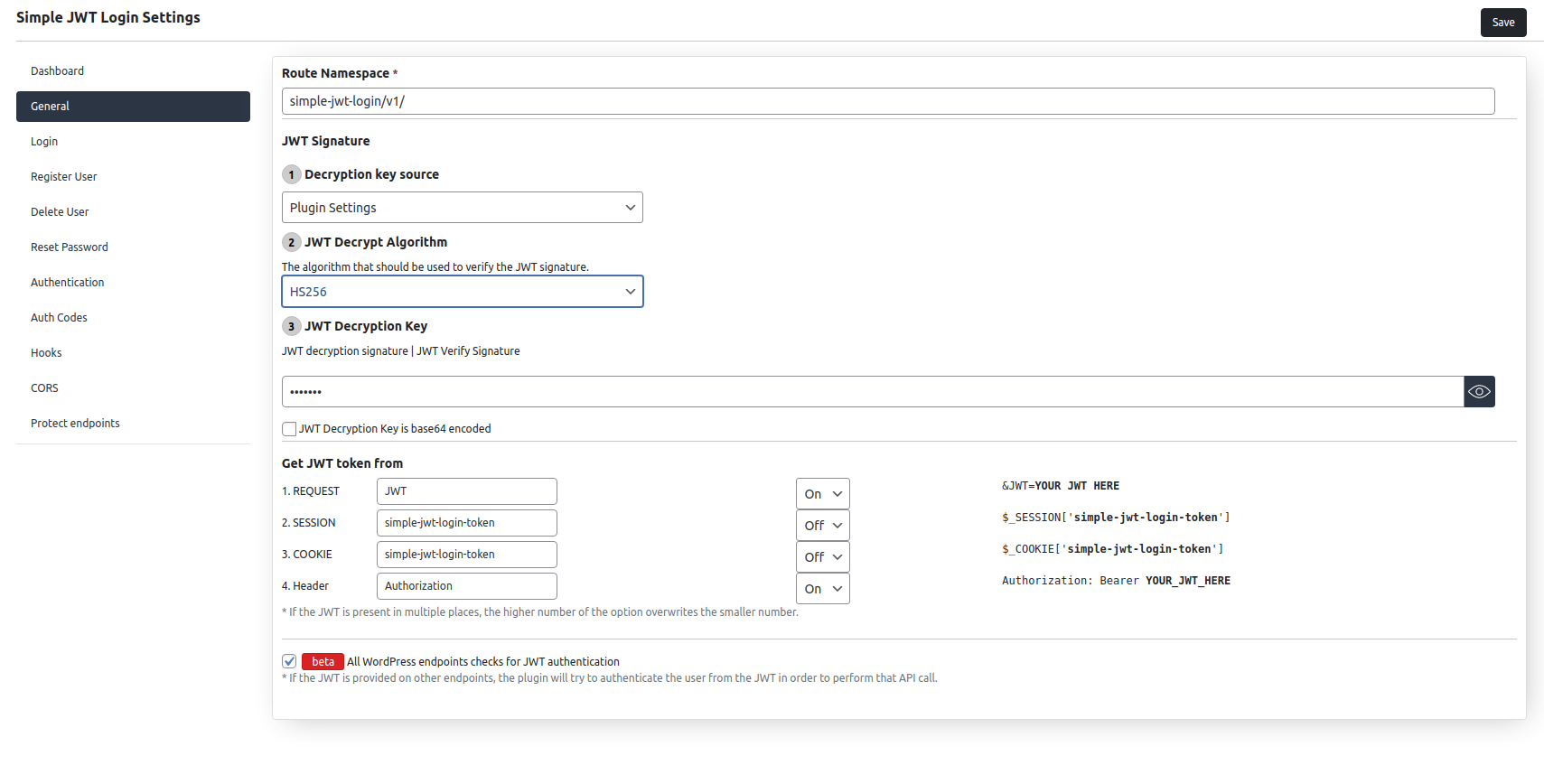Introduction
Simple-JWT-Login is a FREE WordPress plugin that allows you to use a JWT on WordPress REST endpoints.
The main purpose of this plugin is to allow Mobile apps, or other websites to access the content from a WordPress website via REST endpoints in a secure way.
Installation
Here’s how you install and activate the JWT-login plugin:
- Download the Simple-JWT-login plugin from https://wordpress.org/plugins/simple-jwt-login.
- Upload the .zip file in your WordPress plugin directory.
- Activate the plugin from the “Plugins” menu in WordPress.
- Go to the Plugins menu in WordPress and click
Add New - Search for 'Simple JWT Login' and select
Install Now - Activate the plugin when prompted
Configuration
- Go to “General section”
- Set a “JWT Decryption key”. With this key, we will validate your JWT.
- Choose “JWT Decryption algorithm”.
- Save Changes
caution
For security reasons, please make sure you use a complex decryption key and also include special characters in your decryption key.
Request Parameters
You can send the request parameters:
- Form Data
- Query parameters
- Request body ( as JSON )
Get JWT from option
By default, only the REQUEST is on. This means that the plugin will search in the request for the JWT.
Also, you set to search in:
- REQUEST ( plugin will search for the
JWTkey :&JWT=your_jwt) - SESSION ( plugin will search for the
simple-jwt-login-tokenkey:$_SESSION['simple-jwt-login-token']) - COOKIE ( plugin will search for the
simple-jwt-login-tokenkey:$_COOKIE['simple-jwt-login-token']) - HEADER ( plugin will search in the
Authorizationheader:Authorization: Bearer YOUR_JWT_HERE)
If JWT is provided in multiple places, the higher number of the option will overwrite the smaller one.
For example, let's say you will send a JWT in REQUEST and in HEADER. The header JWT will be used.
note
I recommend you to enable the HEADER option, and always send the JWT in the header.
Allow JWT usage on all endpoints
In order to use this feature, you will need to check "All WordPress endpoints checks for JWT authentication" in the "General" section. When a JWT is found, first, you will be authenticated as the user in the JWT, and then the call to the endpoint will be made.
For example, you can create posts, as a specific user, if you provide a JWT in your request.
curl -X POST "https://simplejwtlogin.com/wp-json/wp/v2/posts?content=PostContent&title=PostTitle" -d '{"JWT":"YOUR_JWT_HERE"}'
or
curl -X POST "https://simplejwtlogin.com/wp-json/wp/v2/posts" -H "Authorization: Bearer YOUR_JWT_HERE" --form title="Title" --form content="My content" --form type="page"
For the second example, you need to make sure that you allow search for JWT in the header( you can set this in: General settings -> Get JWT token from )
note
When you pass the JWT parameter, it is not case-sensitive. You can also pass it as jwt.
General settings screenshot
